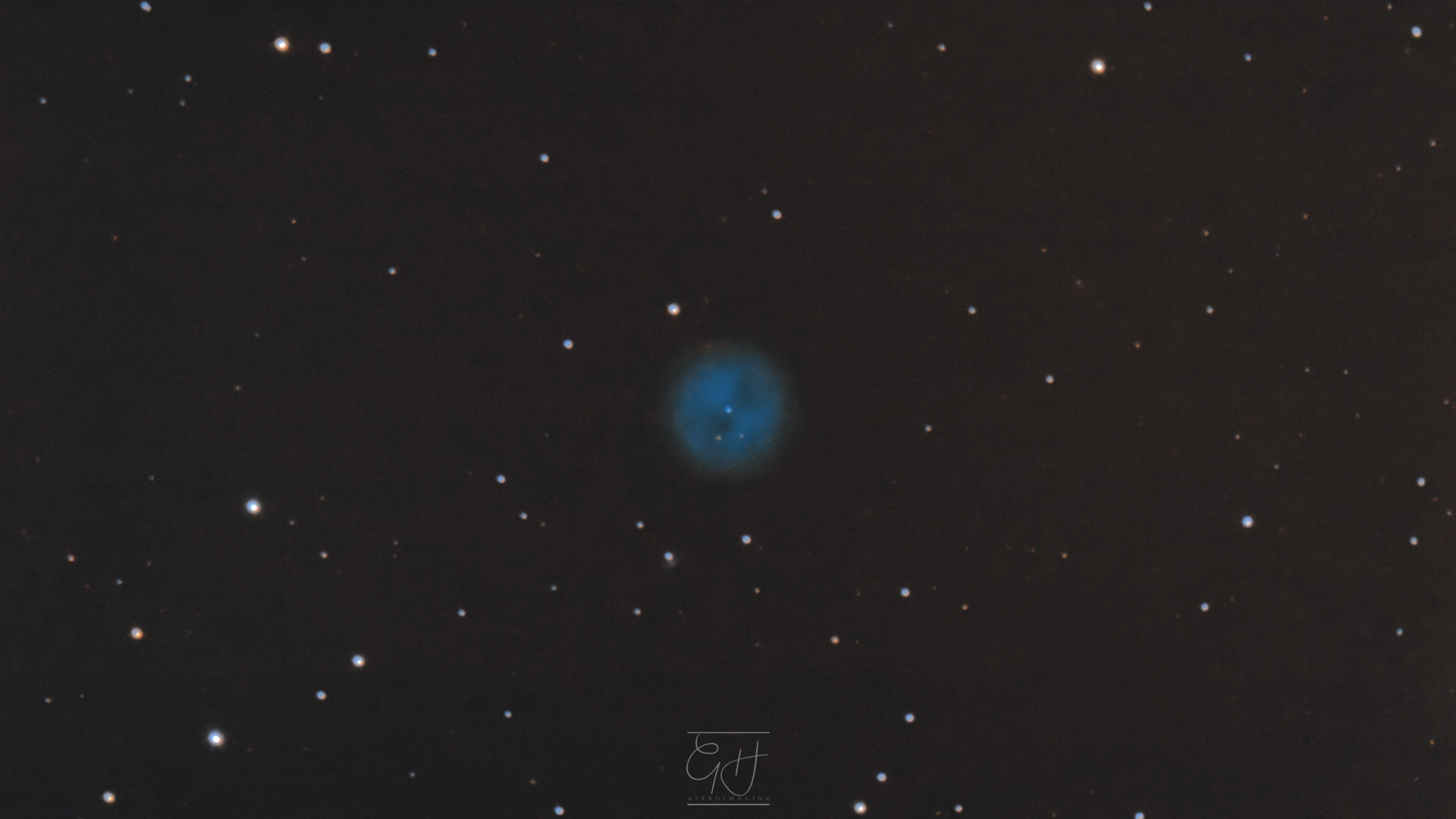The Owl Nebula, February 26 2019


The Owl Nebula is a planetary nebula, which is a bit of a misleading name because it has nothing at all to do with planets. It is also known by the names M97 and NGC3587.
A planetery nebula forms when a star with a mass in the range of 1 - 8 times that of our sun reaches the end of its normal life, and runs out of fuel. The outer layers of the star's atmosphere begin to dissipate outward due to the reducing gravity of the star, until the remaining mass collapses inwards and begins to emit high energy UV radiation which excites the expanding gas cloud and causes it to fluoresce in the specific emission wavelengths of the gases present. This emission is what becomes visible as the planetary nebula.
More information about this object can be found on its Wikipedia page.
This image was one of the two that were captured the first time I attempted to set up both of my telescopes for simultaneous shooting. It was probably another example of being a little over ambitious, but nothing ventured - nothing gained.
You can view this image in the WorldWideTelescope by clicking here.










Sign in to enable commenting